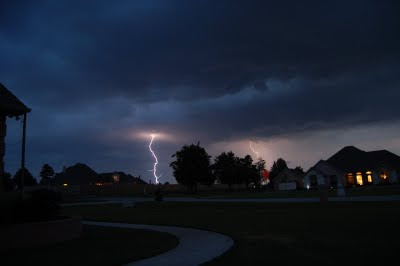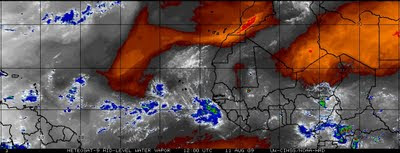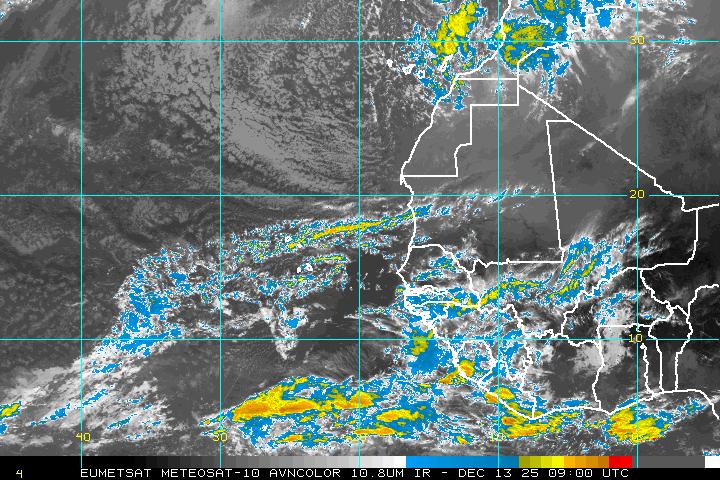
Four Years ago today the Gulf Coast was changed forever and the city of New Orleans was about to go under water. Scientists’ worst fear, a category 5 hurricane, was about to make landfall on the City of New Orleans. The catastrophe that followed was unimaginable just 24 hours earlier to most but, the Nation Weather Service in New Orleans put out a couple of statements that really made you feel the severity of what was about to happen. The first statement is a special weather statement issued by the national weather service on the morning before Katrina made landfall. The second is the afternoon forecast discussion hours before Katrina made landfall. Just Chilling!
URGENT - WEATHER MESSAGE
NATIONAL WEATHER SERVICE NEW ORLEANS LA
1011 A.M. CDT SUN AUG 28 2005
...DEVASTATING DAMAGE EXPECTED...
.HURRICANE KATRINA...A MOST POWERFUL HURRICANE WITH UNPRECEDENTED STRENGTH...RIVALING THE INTENSITY OF HURRICANE CAMILLE OF 1969.
MOST OF THE AREA WILL BE UNINHABITABLE FOR WEEKS...PERHAPS LONGER. AT LEAST ONE HALF OF WELL CONSTRUCTED HOMES WILL HAVE ROOF AND WALL FAILURE. ALL GABLED ROOFS WILL FAIL...LEAVING THOSE HOMES SEVERELY DAMAGED OR DESTROYED.
THE MAJORITY OF INDUSTRIAL BUILDINGS WILL BECOME NON FUNCTIONAL. PARTIAL TO COMPLETE WALL AND ROOF FAILURE IS EXPECTED. ALL WOOD FRAMED LOW RISING APARTMENT BUILDINGS WILL BE DESTROYED. CONCRETE BLOCK LOW RISE APARTMENTS WILL SUSTAIN MAJOR DAMAGE...INCLUDING SOME WALL AND ROOF FAILURE.
HIGH RISE OFFICE AND APARTMENT BUILDINGS WILL SWAY DANGEROUSLY...A FEW TO THE POINT OF TOTAL COLLAPSE. ALL WINDOWS WILL BLOW OUT.
AIRBORNE DEBRIS WILL BE WIDESPREAD...AND MAY INCLUDE HEAVY ITEMS SUCH AS HOUSEHOLD APPLIANCES AND EVEN LIGHT VEHICLES. SPORT UTILITY VEHICLES AND LIGHT TRUCKS WILL BE MOVED. THE BLOWN DEBRIS WILL CREATE ADDITIONAL DESTRUCTION. PERSONS...PETS...AND LIVESTOCK EXPOSED TO THE WINDS WILL FACE CERTAIN DEATH IF STRUCK.
POWER OUTAGES WILL LAST FOR WEEKS...AS MOST POWER POLES WILL BE DOWN AND TRANSFORMERS DESTROYED. WATER SHORTAGES WILL MAKE HUMAN SUFFERING INCREDIBLE BY MODERN STANDARDS.
THE VAST MAJORITY OF NATIVE TREES WILL BE SNAPPED OR UPROOTED. ONLY THE HEARTIEST WILL REMAIN STANDING...BUT BE TOTALLY DEFOLIATED. FEW CROPS WILL REMAIN. LIVESTOCK LEFT EXPOSED TO THE WINDS WILL BE KILLED.
AN INLAND HURRICANE WIND WARNING IS ISSUED WHEN SUSTAINED WINDS NEAR HURRICANE FORCE...OR FREQUENT GUSTS AT OR ABOVE HURRICANE FORCE...ARE CERTAIN WITHIN THE NEXT 12 TO 24 HOURS.
ONCE TROPICAL STORM AND HURRICANE FORCE WINDS ONSET...DO NOT VENTURE OUTSIDE!
AREA FORECAST DISCUSSION...UPDATED
NATIONAL WEATHER SERVICE NEW ORLEANS LA
452 PM CDT SUN AUG 28 2005
.UPDATE...TO ADD TORNADO WATCH #752.
.DISCUSSION...
SOUTHEAST LOUISIANA SEEMS POISED FOR A DATE WITH DESTINY AS CATEGORY 5 HURRICANE KATRINA CONTINUES TO KEEP A BEAD ON BARATARIA BAY AND THE GREATER NEW ORLEANS AREA. THE GFS MODEL CONTINUES TO BE SUPERIOR IN ITS HANDLING OF THE SYSTEM INASMUCH AS TO BASE THE CONVENTIONAL FORECAST PARAMETERS WITH GOOD INTEGRITY AND IN AGREEMENT WITH NHC ADVISORIES.
NEEDLESS TO SAY...THE WORST CAN BE ANTICIPATED AND URGENCY IS BEING STRESSED IN ALL PRODUCTS AS A WORST CASE HURRICANE SCENARIO FOR THIS VERY FRAGILE AND VULNERABLE STRETCH OF U.S. COASTLINE. THE EYE IS EMERGING ON THE KLIX LONG RANGE LOOP AND BANDS ARE EXTENDING TO LAKE PONTCHARTRAIN AT THIS TIME. THINGS WILL BE DETIORATING STEADILY FROM THIS POINT FORWARD FOR THE NEXT 24 HOURS.
WILL MAINTAIN ALL WARNINGS AS ALREADY POSTED AS WELL AS THE FLASH FLOOD WATCH. STORM PREDICTION CENTER HAS ADVISED THAT THE FIRST TORNADO WATCH OF THE EVENT WILL LIKELY BE ISSUED FOR THE REGION EARLY THIS EVENING...PROBABLY RIGHT AFTER SUNSET.
MOST ATTENTION WITH THIS PACKAGE WAS DAY 1-2 WITH LITTLE IF ANY CHANGES MADE BEYOND DAY 3. GOOD LUCK AND GODSPEED TO ALL IN THE PATH OF THIS STORM.
There has been much discussion on whose fault and why we saw so many deaths from Katrina. Without getting political let me say I hope we have all learned a valuable lesson and when a catastrophic storm heads towards the coast again, residents get out.






























